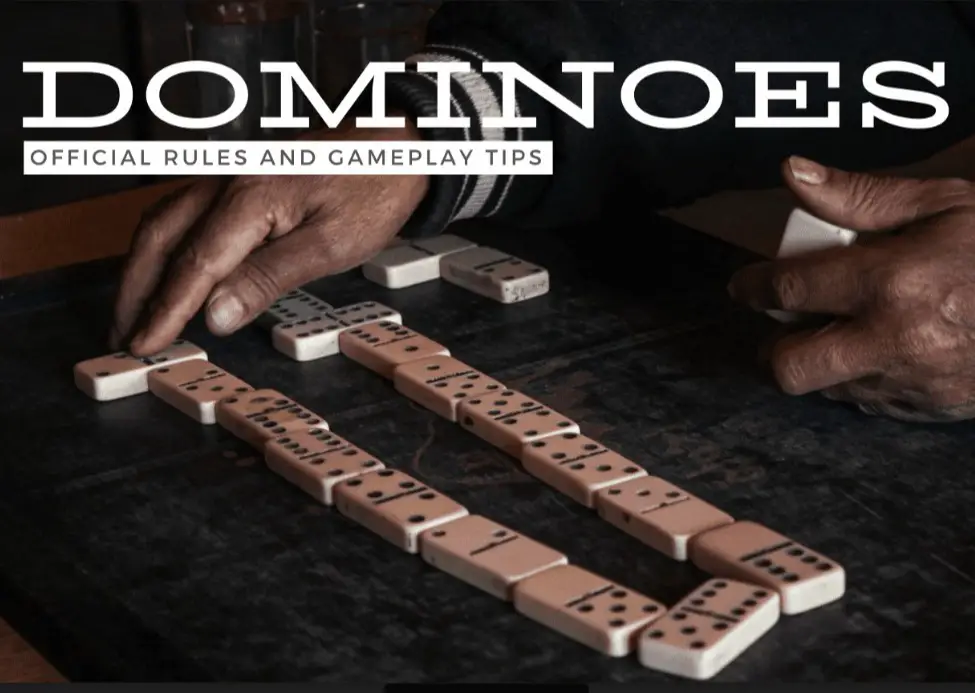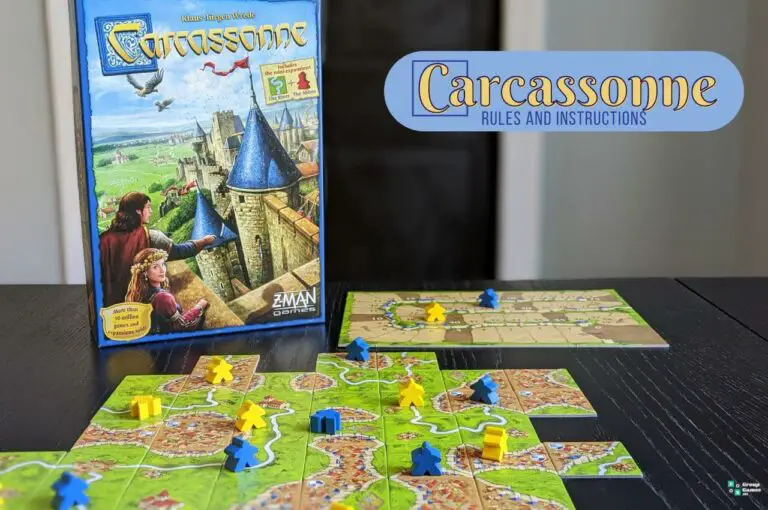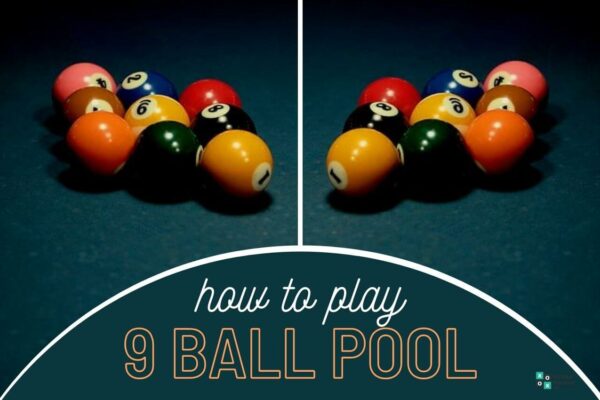If there’s one thing we love most about dominoes, it’s there’s a seemingly never-ending list of variations on this classic tile game, making it suitable for all ages, occasions, and abilities. Today, however, we’re going to focus on learning the official domino rules for the classic version of the game.
Why?
Because once you’ve mastered the basics of straight dominoes, you’ll find it much easier and more enjoyable to learn games like chicken foot dominoes or even modern twists such as Tri-Ominos.
Besides, of all the variations out there, straight dominoes is just about the easiest one to play:
Strategically place your tiles end-to-end in an attempt to get rid of the most dominoes possible. At the end of the game, whoever has the smallest combined total of spots on all their remaining dominoes wins the game.
What is Dominoes?
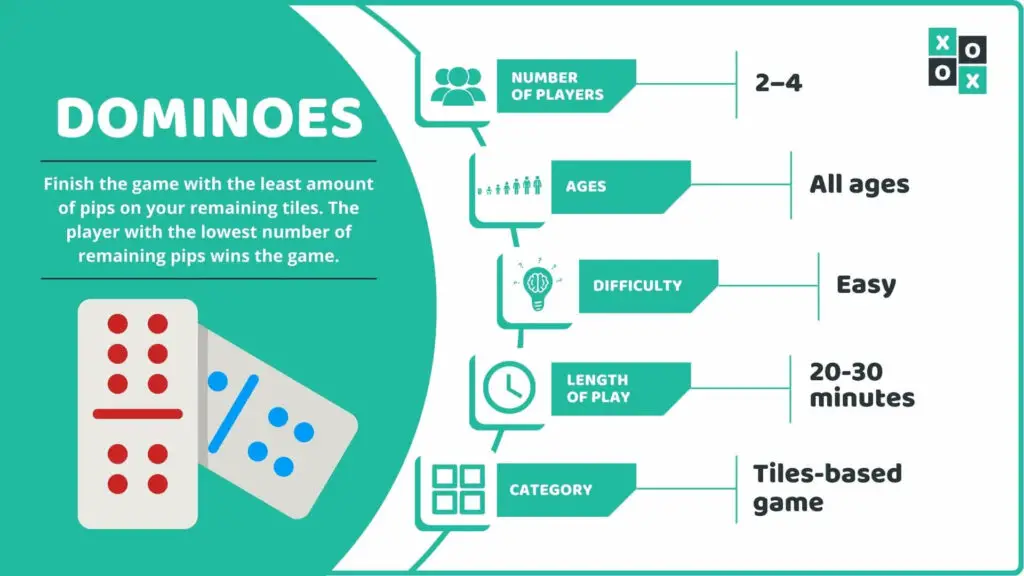
Sometimes referred to as “standard” or “block” dominoes, the variation of the game as we know it today dates back all the way to 18th century Italy, though the earliest mentions of dominoes can be traced back to Song Dynasty China in the 11th century.
In modern times, the game has become a staple of pubs and bar rooms the world over, with many pubs in England combining the game with the standard darts game to create competitive “Darts & Doms” leagues up and down the country.
Of course, you don’t need to head to your local watering hole to enjoy this one. An easy-to-learn tile game, dominoes can be played anywhere at any time by just about anyone.
Don’t believe us? Here’s how it’s done:
Number of Players Required: 2 – 4. Groups of 4 can pair up to play a game of doubles.
Who Can Play It: All ages, though younger children might struggle to count the pips on their tiles.
Difficulty: Easy.
Main Objective: Finish the game with the least amount of pips on your remaining tiles. The player with the lowest number of remaining pips wins the game.
Why We Love It: It’s a great traditional game you play indoors. If you love old-school games like horseshoes but find it won’t stop raining outside, breaking out the dominoes set will provide the same kind of fun. Plus, once you know how to play the standard version of the game, you can mix things up and experiment with different versions.
Playing Dominoes: What You’ll Need
Here’s something else we love about dominoes. All you need to play is a flat surface and a good quality dominoes set.
Most of the dominoes sets you can buy contain 28 tiles which go up to double 6, though you can buy a 55-tile set which goes to double 9.
Setting Up Your Game
To begin, all dominoes are placed face-down on the table and shuffled thoroughly.
Each player then picks 6 dominoes each without letting the other players see the value of their tiles.
All of the remaining tiles are placed in a pile which is commonly referred to as a ‘boneyard.’
Also Read: Chicken Foot game rules
Deciding Who Goes First in Dominoes
The player with the highest double tile goes first.
So, for example, if Player 1 has a double 3 and Player 2 has a double 5, Player 2 goes first. If Player 1 has a double 3 but player 2 doesn’t have any doubles at all, then Player 1 goes first.
If none of the players have a double, the highest single tile determines who goes first.
Official Domino Rules and Gameplay
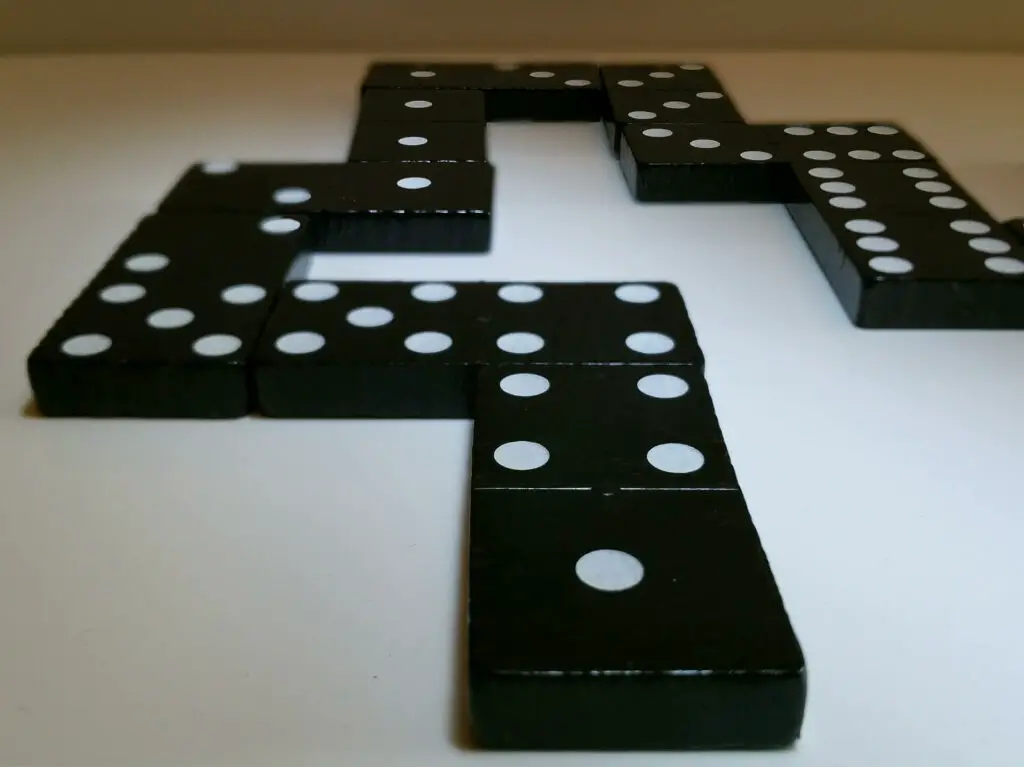
The person with the highest single or double tile starts the game by placing that tile on the table with its value facing up.
The next player then chooses a tile from their hand which has at least one end that matches one of the ends of the tile played by the first player.
For example, if Player 1 plays a double 4, then Player 2 could play a tile that shows a 4 and a 2. They would place their tile so that the 4s from each tile touch.
Player 3 could then play a tile with a number 2 and so on until at least one player “chips out,” (plays all their tiles) or none of the players have any remaining tiles that they can play.
In the case that a player can’t play a tile when it is their turn (for example, they need a 2 or a 4 and don’t have either), they “knock.” This means that they either bang the edge of a domino on the table or otherwise tap it with their hand to signify that they can’t move and thus forfeit their turn.
The next player then takes their turn.
How to Win at Dominoes
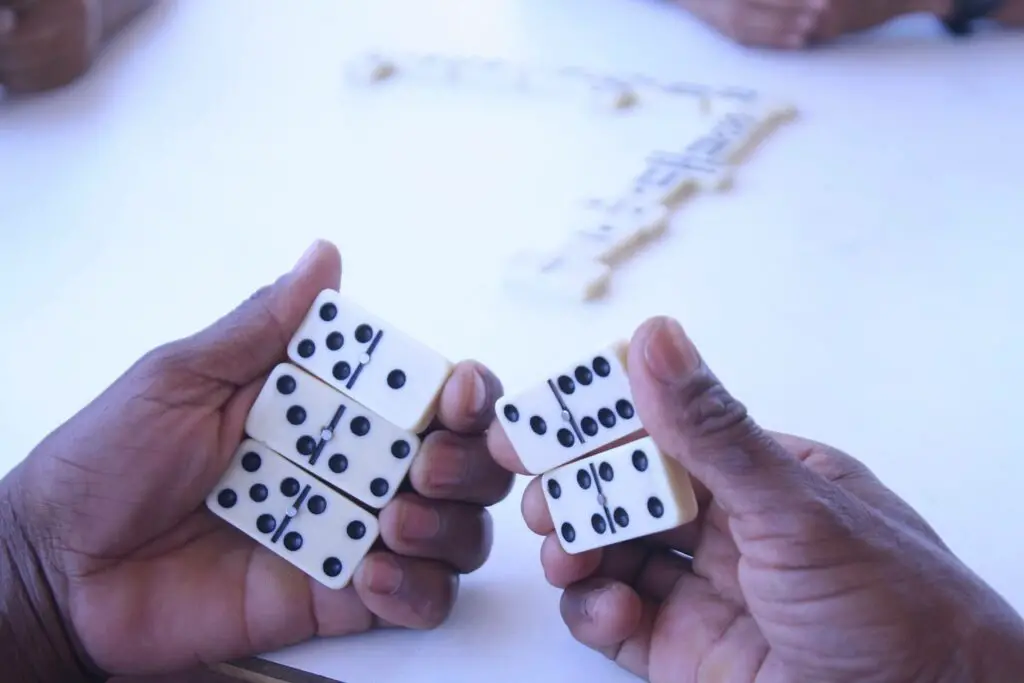
The official dominoes rules list two ways of winning depending on how your game goes.
First of all, you can simply play all of your tiles and be the first player to have no more tiles left to play. Do that, and you’re automatically declared the winner.
Of course, there may be times when no player has a tile that they can play. This is known as the game being “blocked.”
In situations where the game is blocked, players count up the pips on their tiles and whoever has the lowest value wins the game.
Frequently Asked Questions About Dominoes
What Happens When You Tie in Dominoes?
Nothing. In many popular bar games (such as air hockey, for example), a tie leads to some variation of sudden death rules. In dominoes, no such rule applies. If the value of pips on both players tiles are the same, then the game is simply declared a draw and a new game begins.
What Happens If You Play a Tile in Error?
There are no penalties for playing the wrong tile in dominoes, though that doesn’t necessarily make it a free-for-all.
If a person plays the wrong tile (such as joining a 3 to a 4 for example) and it is noticed before the next player takes their turn, then they must take that tile back and play the right one.
If their misplay goes unnoticed until after the next player takes their turn, then that tile is considered to be part of the game and can’t be replaced.
Different Ways to Play Dominoes
We started this guide by telling you that the reason we love dominoes so much is that there’s so many different ways to play it. So we’d be remiss if we didn’t end things by sharing just a few of our favorite dominoes variations.
Mexican Train Dominoes
Mexican Train Dominoes has become increasingly popular in recent years and is fast becoming the most widely-played alternative to the standard game outlined above.
This version is best played with a set of double-12 dominoes, with the double 12 tile acting as the “engine.” From this engine, players work to build their own train by matching their own dominoes one-at-a-time just as they would in regular dominoes.
In this game, the first player to successfully use up all of their tiles in building their train is declared the winner.
Concentration
Much like the classic card game of the same name, all of the domino tiles are placed face down in a 4×7.
Players then take turns in turning over 2 tiles at a time. If those tiles add up to 12 (for example a 4/3 and a 3/2), they keep hold of those tiles. Otherwise, they turn them back over and put them back in the same place. The next player then takes their turn in the same way.
The skill here is all about remembering the location of specific tiles and the best way to match them up to make 12.
Once all tiles have been removed from the grid, the player with the most dominoes wins the game.
5s and 3s
Last but by no means least, players looking to add a whole new challenge to their dominoes game should try 5s and 3s.
In this version, the goal is to be the first player to reach a predetermined number of points. This is usually 61, though many also play the “first to 251 rule.”
Play is much the same as it is in regular dominoes, with players making a chain of tiles with matching ends touching (1s touch 1s, 2s touch 2s etc.). This time, however, points are scored when the pips on the open end of the tile (the end not touching any other tile) is a multiple of either 3 or 5.
One point is awarded per pip for all pips on the open ends of the tiles. So if you played a tile with a 5 on the open end and there was one other open end with a 4, you would score 9 points for that turn.
Admittedly, 5s and 3s can seem a little complicated and may not be the best version for casual players. However, for hardcore dominoes fans looking to take their game to the next level, there are few versions better than this one.
Other Games Similar to Dominoes (Our Guides)
If you enjoyed playing Dominoes, Be sure to check these similar game guides:

